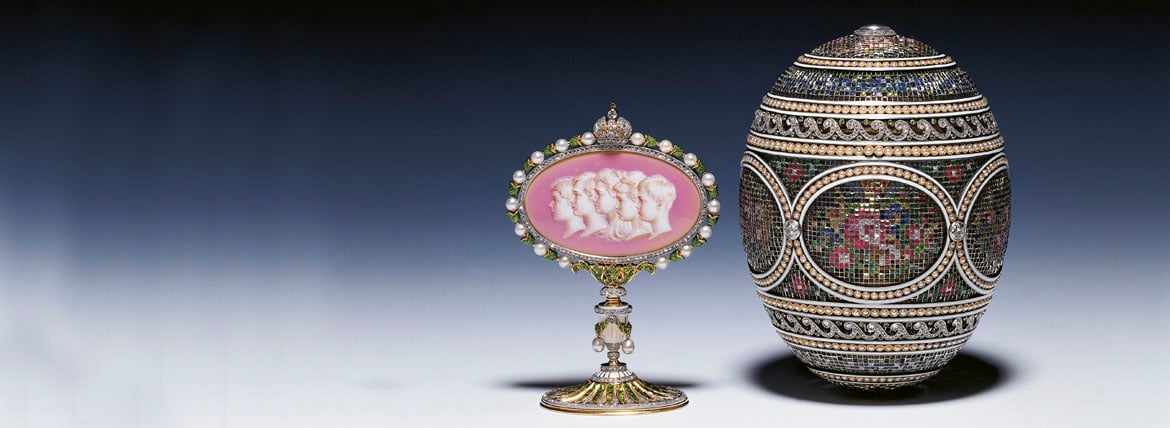
Fabergé in the Royal Collection
An introduction to Fabergé in the Royal Collection
2. From Russia With Love: Family Gifts
Many of the Fabergé pieces in the Royal Collection were gifts exchanged by members of the British and Russian royal families. They are uniquely linked to the Romanov dynasty and its fate.
The connection stemmed from two Danish sisters – the princesses Alexandra (1844-1925) and Dagmar (1847-1928). Dagmar became Tsarina Marie Feodorovna through her marriage to Tsar Alexander III of Russia, while her sister became Queen Alexandra, consort of King Edward VII. Their combined patronage proved the greatest publicity machine that Fabergé could have hoped for, resulting in custom from most of the royal houses of Europe.
Marie Feodorovna may have introduced her sister to the St Petersburg-based Fabergé firm as early as 1881. From that time, the two families continually exchanged Fabergé gifts for Easter and Christmas, and for birthdays and other notable anniversaries. George, Prince of Wales, wrote that at his mother's birthday in 1894 she had 'got half of Fabergé's shop'. By the time a London branch opened in 1903, the future King Edward VII and Queen Alexandra had become avid collectors, a passion Prince George and his sister Princess Victoria inherited.
The new Tsar, Nicholas II, continued to exchange Fabergé gifts with the British royal family, and his cousin the Prince of Wales described with great affection the occasions on which they met. King George V remarked in his diary, 'I was devoted to Nicky, who was the kindest of men'.
Click on an object to find out more:







